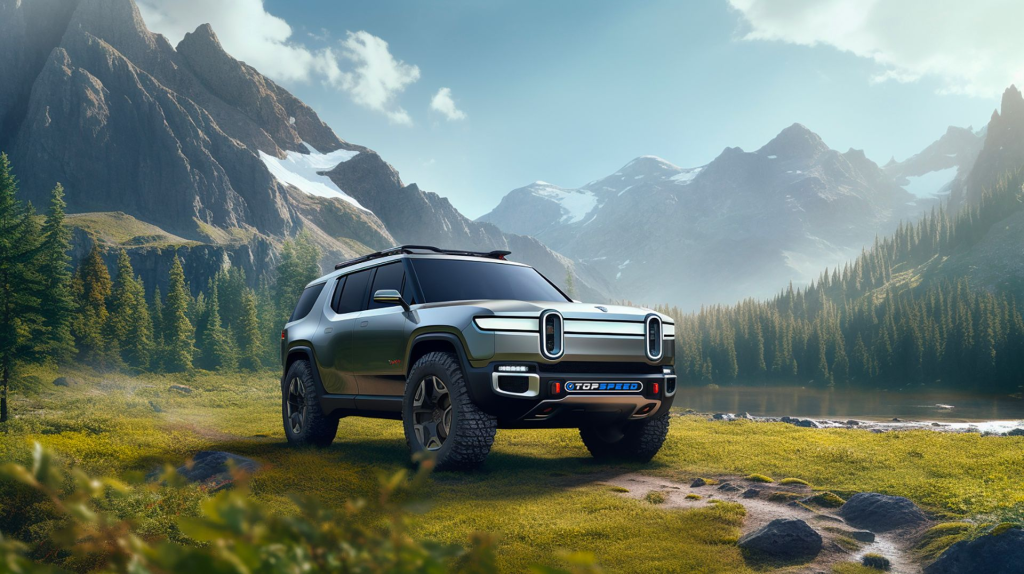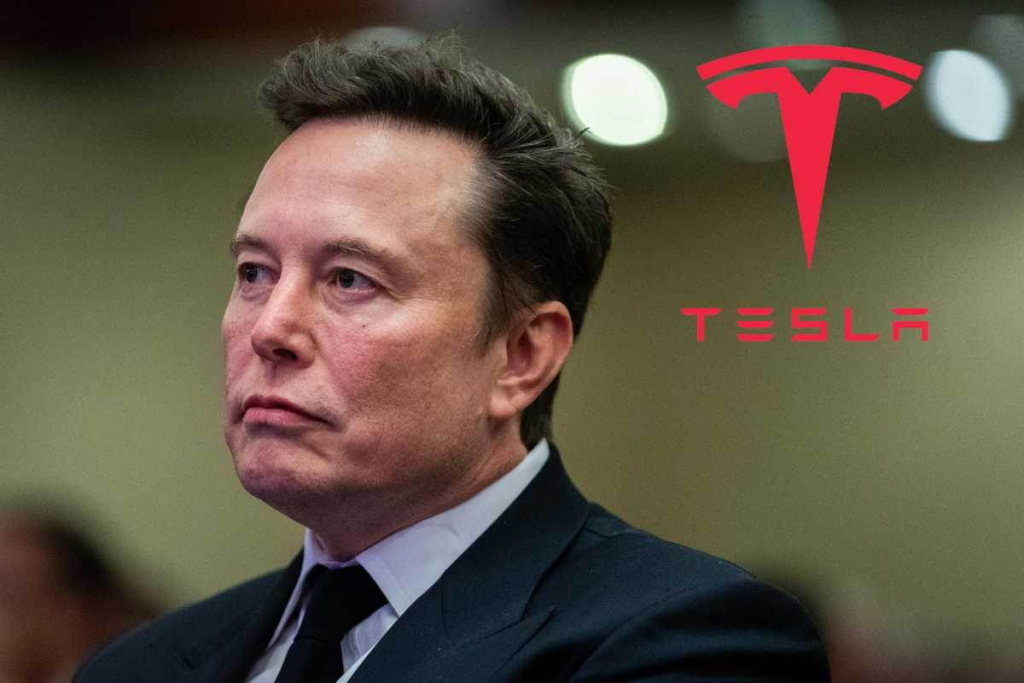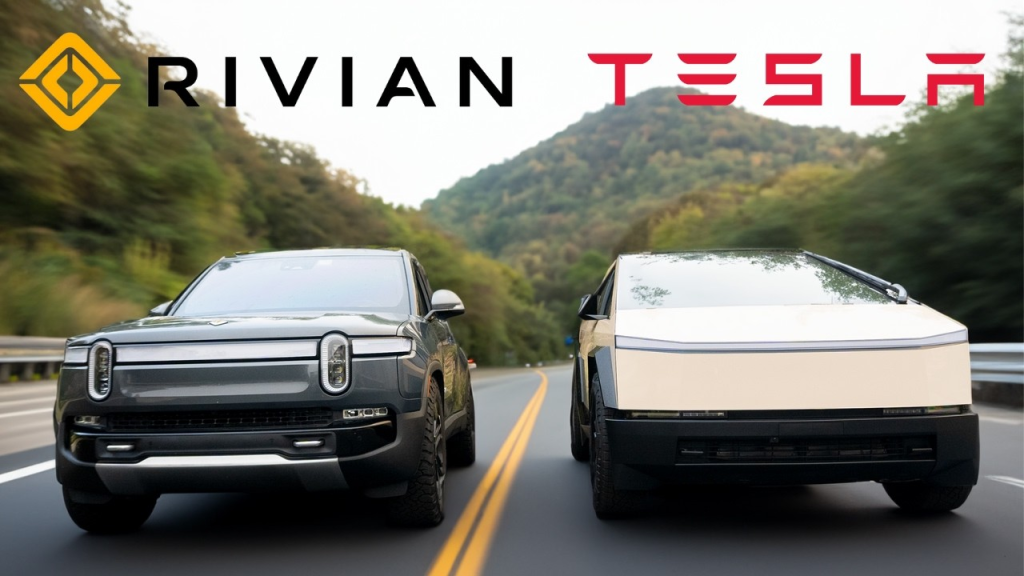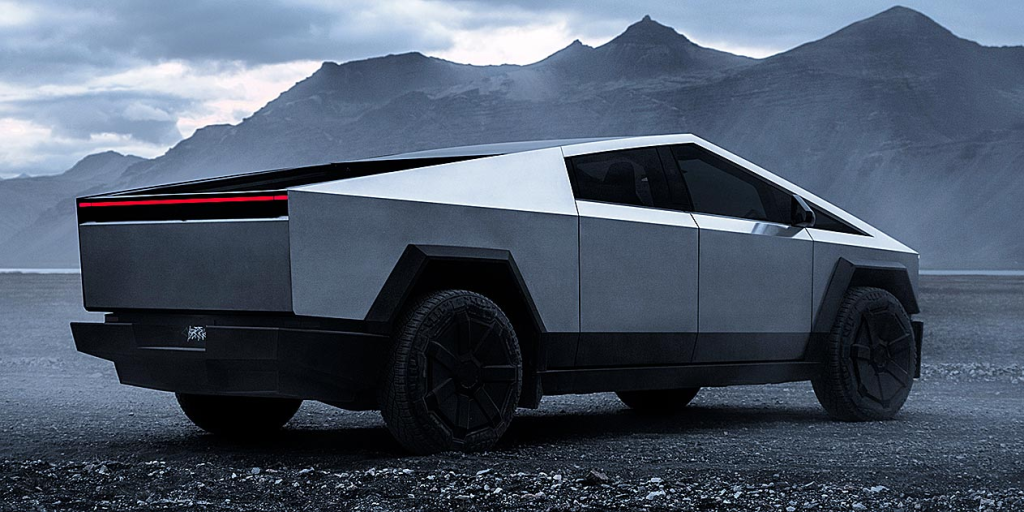Tesla Aims to Destroy Rivian For Revenge By Undercutting $27,600 On Cybertruck
In a dramatic twist in the electric vehicle (EV) industry, Tesla has set its sights on Rivian, aiming to obliterate the competition out of what many believe to be pure revenge. This feud began when Rivian, a startup with ambitions to dethrone Tesla, managed to attract top talent from Tesla, raised a staggering $12 billion, and filed patents to potentially block Tesla’s charging technology.

However, Elon Musk’s countermove was nothing short of genius, introducing the Cybertruck as a direct challenge to Rivian’s market position.

Rivian’s Bold Vision

Back in 2019, RJ Scaringe founded Rivian with a vision that saw an opening in Tesla’s dominance of the EV market. Rivian focused on premium electric trucks, heavy-duty pickups, and adventure vehicles, segments where Tesla had not yet fully ventured. Rivian’s strategy was to exploit what they perceived as Tesla’s blind spots in the market.
Financial Backing and Strategy
By 2020, Rivian had secured impressive financial backing, with $2.5 billion from Amazon and T. Rowe Price, and another $2.65 billion from Ford and BlackRock, amassing a total war chest of $12 billion. This financial strength was further bolstered by Amazon’s order of 100,000 electric delivery vans at $67,500 each, marking the largest EV deal in history at the time.

Rivian’s aggressive strategy included hiring over 70 Tesla engineers, adopting Tesla’s direct-to-consumer sales model, constructing a massive factory in Normal, Illinois, and securing key patents for charging technology. Their aim was clear: to build a vehicle that could be a true Tesla killer.
Pricing and Market Positioning
Rivian’s pricing strategy was equally bold. The R1T Launch Edition was priced at $75,000, slightly undercutting the Tesla Model X at $79,990, while the R1S SUV was set at $77,500. This positioning wasn’t just about competition; Rivian was directly targeting one of Tesla’s most profitable segments.
Elon Musk’s Counter with the Cybertruck

In response to Rivian’s aggressive market entry, Elon Musk introduced the Cybertruck. Priced at a disruptive $39,900, the Cybertruck was not just competitive; it undercut Rivian by $27,600 while promising superior specifications. This move instantly altered the market dynamics.
Market Reaction

The market’s reaction was swift and severe for Rivian. Following the Cybertruck announcement, Rivian’s stock plummeted, losing 85% from its peak, with a $153 billion valuation disappearing overnight. Musk’s strategy was clear: enter the market at half the price of your competitor.
The Ongoing Battle
The competition didn’t end there. Rivian struggled with production issues, Tesla pursued legal action against Rivian over trade secrets, and Tesla continued to innovate by announcing new charging standards. While Rivian was burning through its cash reserves, Tesla was scaling up.
2023 Performance Comparison
By 2023, the numbers spoke volumes. Tesla delivered 1.8 million vehicles, while Rivian managed only 57,232. Tesla wasn’t just winning; they were dominating the electric vehicle landscape.
Cybertruck’s Market Impact

The Cybertruck’s launch in November 2023 was nothing short of stunning. Achieving profitability by Q3 2024, an almost unheard-of feat in the EV sector, the Cybertruck was producing at a rate of 125,000 units per year. It captured 50% of the electric pickup market share in the U.S. with 12,991 sales in Q4 2024 alone, turning skepticism into market dominance.
Financial Success of the Cybertruck

The financial implications for Tesla from the Cybertruck were significant. The vehicle’s introduction boosted Tesla’s gross margin to 19.8% in Q3 2024, a notable recovery from the decline seen earlier in the year.
This move helped Tesla hit $0.72 per share in earnings, surpassing forecasts and playing a pivotal role in turning around its stock performance. The Cybertruck, with its controversial yet iconic design, proved Tesla’s capability to not just enter but dominate new markets with unmatched efficiency and profitability.
The Key to Cybertruck’s Success

The reasons behind the Cybertruck’s rapid success are multifaceted. Tesla managed a swift production ramp-up, bringing the vehicle from launch to profitability in less than a year. The design, although polarizing, became iconic, capturing attention and setting a new standard in the electric truck market. Tesla’s manufacturing efficiency was unmatched, allowing them to scale production profitably, a feat rarely accomplished by other EV manufacturers.
Lessons from the Battle
The Tesla vs. Rivian saga offers a $100 billion strategy lesson for any industry. To win in competitive markets, companies should:
- Build products in areas where competitors can’t easily compete.
- Allow competitors to set high prices, then strategically attack their margins with lower prices.
- Understand the competitor’s cost structure to outmaneuver them effectively.
These principles are not only applicable in automotive but across all sectors, highlighting the importance of strategic foresight and execution.
Tesla’s Cybertruck Transformation
In under a year, Tesla’s Cybertruck has transformed from a prototype to a profitable anomaly in the EV market, a testament to Tesla’s innovative prowess and strategic acumen. This saga between Tesla and Rivian underscores the intense competition in the electric vehicle industry, where innovation, pricing strategy, and market understanding are key to survival and dominance.
Tesla’s approach with the Cybertruck has not only solidified its position but has also set a benchmark for how to respond to emerging threats with game-changing products.